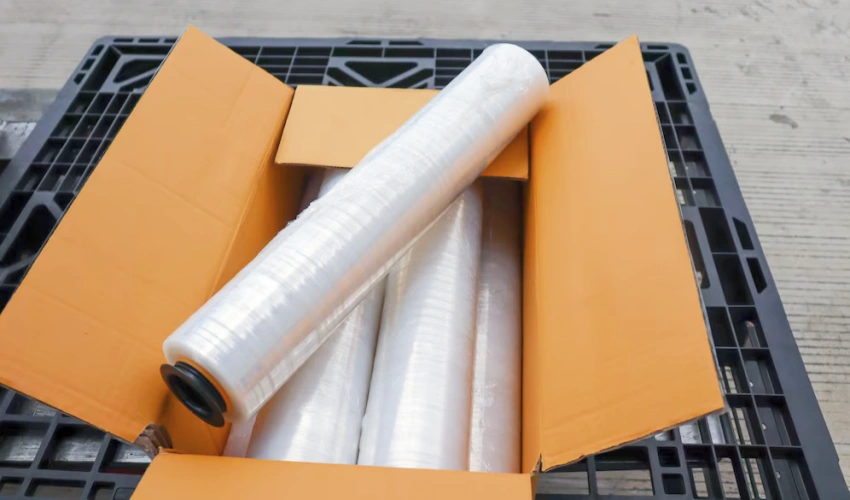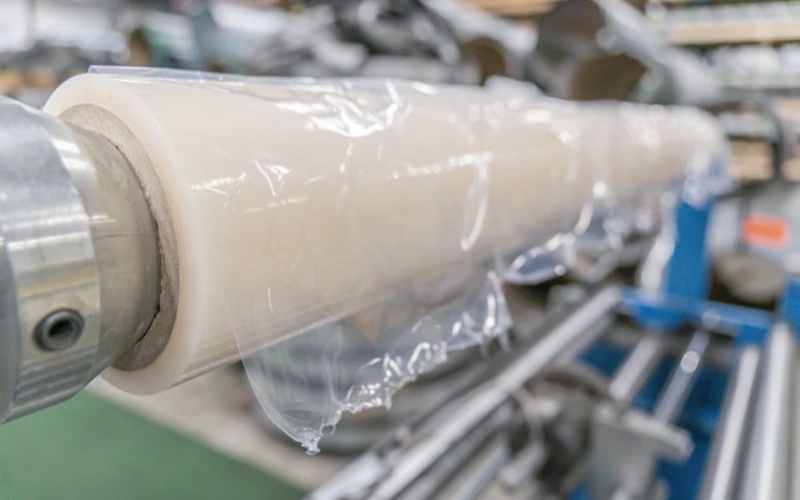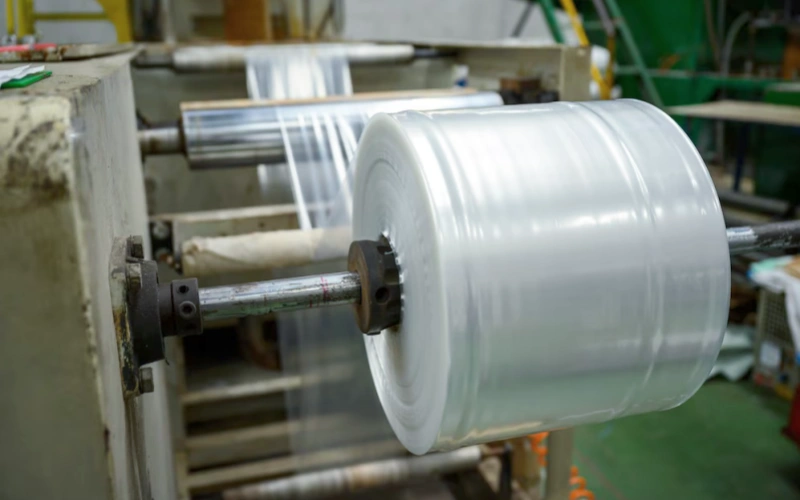
In an era where supply chain efficiency and cost control are non-negotiable for industrial operations, wholesale machine stretch film has emerged as a strategic lever for businesses aiming to balance productivity and profitability. For procurement managers and logistics directors, bulk purchasing isn’t just about buying more—it’s about smarter resource allocation in a market where packaging can account for up to 8-12% of total logistics costs.
Wholesale machine stretch film isn’t a commodity—it’s a systemic solution where every 1% improvement in film performance can yield $4,700/year savings for a mid-sized warehouse (PMMI’s 2022 Operational Benchmarking Report). As automation reshapes packaging, partnering with technical wholesale experts becomes the linchpin of lean, resilient operations.
But cost savings alone aren’t enough. Let’s decode the technical specifications that separate high-performance machine films from substandard products.
Not all machine stretch films are created equal. While substandard products might tempt buyers with lower upfront costs, their hidden inefficiencies often lead to operational chaos and long-term financial bleed. Let’s dissect the critical differences that define high-performance films and expose the risks of cutting corners.
High-Performance Films
Substandard Films
Case Study:
A beverage distributor using budget film suffered 12% misreads in automated scanning systems due to fogging. Switching to anti-fog engineered film reduced errors to 0.3%—saving $220K/year in manual rework.
| Key Metric | High-Performance Film | Substandard Film |
|---|---|---|
| Pre-Stretch Capacity | 250–320% (machine-optimized molecular alignment) | <200% (uneven stretching ↑ film usage by 25%) |
| Load Retention | Holds 2,200+ lbs for 72 hrs (ASTM D5458) | Fails at 1,500 lbs within 24 hrs |
| Tear Resistance | Propagates <2” after puncture (ASTM D2582) | Tears spread 8–12”, risking pallet collapse |
| Static Dissipation | Surface resistivity <10^12 Ω/sq (ESD-safe) | Traps static (↑ dust/damage in electronics) |
Substandard films create a vicious cycle of false economy:
Substandard Green Claims:
High-Performance Sustainability:
Why This Matters
Choosing high-performance machine stretch film isn’t a purchase—it’s a risk mitigation strategy. As automation speeds climb (modern wrappers hit 120 pallets/hour), subpar films become liability bombs. Invest in engineered solutions that align with your machinery’s DNA, and you’ll transform packaging from a cost center to a competitive asset.
Now that we’ve mapped the performance gap, let’s explore how to decode technical specs like a pro—ensuring your next bulk order delivers ROI, not regrets.

When sourcing machine stretch film, understanding its technical specifications is critical to optimizing packaging efficiency, load security, and total cost of ownership. Below, we dissect the 8 core parameters that industrial buyers must analyze—and why they matter in real-world operations.
What It Measures:
Stretch film density expressed in microns (µm) or gauge (1 gauge = 0.25 µm).
Why It Matters:
What It Measures:
How much the film elongates before application (expressed as a percentage).
Performance Impact:
What It Measures:
Test Method:
ASTM D2582 (force required to puncture film with a pyramid probe).
Critical Thresholds:
What It Determines:
How tightly film layers bond without adhesives.
Measurement:
Test Protocol:
ASTM D5458 (measures film’s ability to hold stacked weight over 72 hours).
Failure Costs:
Key Factors:
| Condition | Risk | Solution |
|---|---|---|
| UV Exposure | Film embrittlement in 90 days | UV-inhibited resins (HALS additives) |
| -25°C Cold | Brittle fractures | Metallocene LLDPE formulation |
| Chemical Splash | Gasoline/detergent degradation | 7-layer barrier film architecture |
Overlooked but Critical:
A Midwest appliance distributor lost $283K in 2023 due to:
After switching to 25µm UV-resistant film with ISO-certified cores:
Next Steps for Buyers:
The production of machine stretch film is a precision-driven process that combines advanced polymer science and manufacturing technology. Understanding this process helps buyers evaluate supplier capabilities and ensure consistent quality. Below, we break down the key stages and innovations shaping modern production.
Process Types:
| Blown Film Extrusion | Cast Film Extrusion |
|---|---|
| - Creates a bubble of molten resin cooled by air | - Spreads resin onto chilled rollers for rapid cooling |
| - Produces thicker films (20–30µm) | - Achieves ultra-thin films (12–15µm) |
| - Lower equipment cost | - Higher production speed (↑25%) |
Critical Control Points:
Machine Direction Orientation (MDO):
Transverse Direction Orientation (TDO):
Pre-Stretch Optimization:
Advanced lines integrate infrared sensors to adjust stretching force in real-time based on film thickness variations (±1µm).
Why the Process Dictates Performance
A flaw in any production stage cascades into field failures:

TCO =
(Cost per Roll) × (Annual Usage)
+
(Downtime Costs + Waste + Damaged Goods + Storage Fees + Compliance Penalties)
–
(Labor Savings from Automation + Recycling Rebates)
Example Calculation:
A warehouse using 10,000 rolls/year at 18/roll(18/roll(180K) may incur:
A German auto parts distributor switched from 16/rollbudgetfilmto16/rollbudgetfilmto18/roll engineered film:
| Metric | Before | After |
|---|---|---|
| Film Usage (rolls/year) | 8,500 | 6,200 (↓27%) |
| Downtime Hours | 67 | 9 (↓87%) |
| Damage Claims | $224K | $18K (↓92%) |
| Annual Savings | — | $1,237,000 |
Savings drivers: Higher pre-stretch (300% → 320%), superior puncture resistance, RFID-tracked quality.
Step 1: Audit Current Usage
Step 2: Demand Transparent Data
Step 3: Simulate Scenarios
Use tools like Lantech’s Film Savings Calculator to model:
Emerging technologies are rewriting cost equations:
The Bottom Line
The cheapest film often becomes the most expensive. By quantifying hidden variables—from warehouse floor realities to regulatory landmines—you can transform stretch film from a commoditized expense into a strategic profit protector.
Selecting the right machine stretch film supplier is a strategic decision that impacts everything from production uptime to long-term sustainability goals. To avoid costly missteps, use this battle-tested framework to separate true industrial partners from transactional vendors.
Key Questions to Ask:
Red Flags:
Pro Tip:
Conduct a pallet drop test during factory audits—load a 2,200 lb pallet, wrap with their film, and simulate a 30° tilt. Measure containment force decay over 48 hours.
Critical Checks:
| Factor | Best-in-Class | Subpar |
|---|---|---|
| Certifications | ISO 9001, ISO 14001, UL ECOLOGO | Only basic business licenses |
| Thickness Tolerance | ±0.5 µm (laser-guided extrusion) | ±2.5 µm (manual adjustments) |
| Defect Rate | ≤0.3% (AI vision inspection) | 2–5% (human visual checks) |
Action:
Must-Have Capabilities:
Cost Impact Example:
A supplier without East Coast U.S. stock caused a Midwest manufacturer to airfreight film at 8.50/kgvs.8.50/kgvs.0.85/kg sea rates—costing $217,000 extra in 2022.
Verification Toolkit:
Innovation Benchmark:
Leading suppliers now offer blockchain-tracked PCR content, proving 30–50% recycled material via smart contracts.
Create a Scorecard:
| Criteria | Weight | Supplier A | Supplier B |
|---|---|---|---|
| Cost per Protected Pallet | 30% | $1.72 | $1.85 |
| Downtime Risk Score | 25% | 4/10 | 7/10 |
| Sustainability Index | 20% | 90/100 | 65/100 |
| Payment Terms | 15% | Net 60 | Net 30 |
| Tech Support | 10% | 24/7 engineers | Email-only |
Calculation:
(Supplier A: 0.3×1.72 + 0.25×4 + 0.2×90 + 0.15×60 + 0.1×24 = Total Score)
Challenge: Needed a global film partner for 14 plants after 23% defect spikes with local vendors.
Solution: Applied the 5-step framework to evaluate 8 suppliers. Final choice delivered:

Machine stretch film is essential for securing palletized goods across industries, but each sector has unique requirements. Understanding these needs ensures optimal performance, cost-efficiency, and compliance. This guide explores key considerations for major industries and provides tailored recommendations.
Ensures food safety, prevents contamination, and maintains hygiene during storage/transport.
Key Requirements:
Demands sterile packaging and tamper resistance for sensitive products.
Key Requirements:
Industry Overview:
Handles heavy, sharp-edged components (e.g., engine parts).
Key Requirements:
Protects sensitive components from static and physical damage.
Key Requirements:
Outdoor storage and heavy loads (e.g., steel beams, cement).
Key Requirements:
Requires films that perform in sub-zero temperatures.
Key Requirements:
Choosing the right machine stretch film requires aligning technical specifications with industry-specific challenges. By prioritizing certifications, performance testing, and supplier partnerships, businesses can enhance efficiency, reduce costs, and meet regulatory demands. Always tailor your choice to the unique demands of your sector for optimal results.
High-volume wholesale machine stretch film offers businesses a strategic advantage through cost savings, reliability, and enhanced operational performance. By aligning with reputable suppliers and addressing logistical considerations, companies can leverage bulk purchasing to drive efficiency, sustainability, and customer satisfaction.

My name is James Thompson, and I’m the editor of this website dedicated to Stretch Film, Pallet Wrap, and Stretch Wrap products.
My passion for packaging began when I noticed the challenges companies face in securing their products efficiently for transportation and storage. This inspired me to delve deep into the world of stretch films and pallet wraps, exploring the latest technologies and best practices.
I aim to provide valuable insights, practical tips, and up-to-date industry trends to assist you in making informed decisions. Whether you’re a small business owner or part of a large corporation, my goal is to support you in optimizing your operations and ensuring your products reach their destination safely.
Thank you for visiting, and I look forward to accompanying you on your journey toward better packaging solutions.
Comments are closed